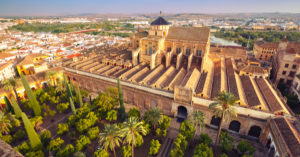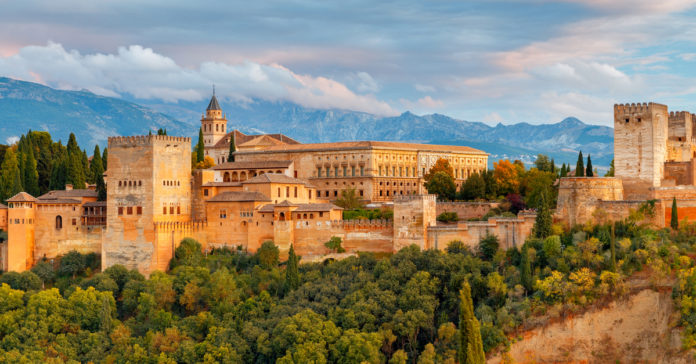On January 2, 1492 the last Muslim kingdom of Al Andalus fell to the Catholic Monarchs Ferdinand and Isabella, putting an end to 800 years of glorious Islamic civilisation and ushering in an era of intolerance, persecution and bloodshed which lasts to this day.
As the last Muslim ruler of Granada, Muhammad XII (better known as Boabdil), looked back at the Alhambra Palace on his way into exile he sighed and perhaps even shed a tear. On seeing this his formidable mother mocked him: “Why do you cry like a woman for what you couldn’t defend like a man?”
Boabdil’s abject farewell bookended one of the most glorious periods in Islamic and European history – the Muslim presence in the Iberian Peninsula when religious tolerance, sophisticated scholarship, glorious architecture and a superior lifestyle prevailed.
But the fall of Granada also heralded an era of colonialism, genocide, brutal intolerance and persecution with Muslims and Jews suffering the consequences.
And this intolerance of the other still serves as a blueprint for Europe’s interactions with Muslims at home and abroad.
The glories of Al Andalus
Muslim armies first entered the Iberian Peninsula in 711 at a time when Spain and Portugal did not exist as nations. Rather, the territory was controlled by Christian Visigoths and pagans who were divided among themselves. Because of this the Muslim advance would be lightening quick and within a decade they would be campaigning deep into France.
Subscribe to our newsletter and stay updated on the latest news and updates from around the Muslim world!
“Muslim Spain” is now best known by the glories of its architecture such as the Alhambra Palace in Granada or the Grand Mosque of Cordoba, both among Europe’s most visited monuments.
But it was perhaps the Cordoba Caliphate (784-1031) which personified Al Andalus at its height. During this time Cordoba became an unparalleled centre of mutual co-existence and learning when much of the rest of Europe was still in the Dark Ages. It truly was a place where East met West with Muslims, Jews and Christians all intermingling and all flourishing under Muslim rule.
The Grand Mosque of Cordoba with its 800 marble arches or the Cordoba Library (the largest then on earth) were wonders to behold. The latter included manuscripts from Ancient Greece and Rome which had been translated into Arabic, Hebrew and Latin. These documents would stimulate scholarship in the rest of Europe leading to The Renaissance.
Giants of Muslim and Jewish scholarship such as the philosopher and polymath Ibn Rushd or the astronomer, philosopher and Torah scholar Moses Maimonides were citizens of Cordoba.

The use of deodorant and toothpaste was commonplace when it was unheard of elsewhere, tablecloths were used when dining, and Cordobans even invented the three course meal.
Cordoba eventually became the largest city in the world with a population of over 1 million. It had 800 schools, 3,000 mosques and 3,000 inns, 100,000 shops and 900 public baths at a time when the Church condemned bathing.
A few centuries later Queen Isabella of Castile would boast that she had only bathed twice in her life – once after being born and once before her marriage.
Christian reconquest
But if the truth be told the Christian reconquest of the Iberian Peninsula started very soon after the arrival of the Muslims even though it would take 800 years to complete.
By the 15th century the Christians had begun to squeeze the Muslims so much that the few Muslim rulers who remained were effectively vassals paying large tributes in order to stave off invasion.
The real impetus for the fall of Granada started in 1469 when Ferdinand of Aragon and Isabella of Castile married to unite the two largest Christian kingdoms. The Catholic Monarchs, as they were known, were backed by Papal troops and money.
These monarchs, who are celebrated in Spain today as the effective founders of the country, had a vision of a uniquely Catholic nation. And this basically meant killing, expelling, enslaving or forcibly converting the Peninsula’s Muslims and Jews.
The siege of Granada itself lasted eight months with the Muslims completely surrounded and outgunned. And after pleas for help from Muslims in North Africa fell on deaf ears the result was a forgone conclusion.
In the end Boabdil signed off on surrender negotiations which stipulated that he and his court had to leave by January 2, 1492. The last Muslim ruler of Al Andalus would spend the rest of his life in exile in Morocco.
An eyewitness to the surrender wrote:
“The Moorish sultan with about 80 or 100 on horseback, very well dressed, went forth to kiss the hand of their highnesses, Isabella and Ferdinand. According to the final capitulation agreement the royals declined the offer and the key to Granada was passed into Spanish hands without Muhammad XII having to kiss the hands of the King and Queen.”
Sadly the fall of Granada would have disastrous consequences for the Peninsula’s Jews and Muslims.
Around 100,000 Muslims were subsequently killed or enslaved, 200,000 fled while 200,000 remained. Later, a decree would be ordered forcing those who remained to convert to Christianity on pain of death.
The Catholic Monarchs also passed a decree expelling all Jews or forcing them to convert, again on pain of death.
Many Jews would seek refuge in North Africa and the Ottoman Empire where they would live peacefully with Muslims. The Ottoman Sultan Bayezid II even sent ships to Spain to save and repatriate them.
Aside from physical extermination, the Catholic Monarchs would also sanction cultural vandalism. Precious Arabic and Hebrew texts were burned and Muslim masterpieces such as the Alhambra Palace and the Great Mosque of Cordoba were desecrated.
Upon seeing a cathedral implanted in the middle of the Cordoba Mosque, a horrified Charles 1 of Spain remarked: “They have taken something unique in the world and destroyed it to turn it into something you can find in any city.”
Meanwhile, Ferdinand and Isabella would go onto sponsor Christopher Columbus’s voyages to the New World in a bid to find new trade routes which would compensate for the huge debt they had accrued in prosecuting war.
And their blueprint for how to deal with minorities became the model for many other European states as well – namely extermination, expulsion, forced conversion and persecution all in the name of assimilation.
We can even see the echos of this policy in how modern France is currently dealing with Muslims who dare to claim their rights as equal citizens.
In 2014, more than 500 years after the fall of Granada, the Spanish Parliament gave the Jewish descendants of those persecuted in the time of the Catholic Monarchs the right to return to Spain. No such decree has yet been granted to Muslims.










![The Taliban’s Road To Success [Short Film]](https://5pillarsuk.com/wp-content/uploads/2024/11/Kabul-roadworks-thumbnail-218x150.png)









